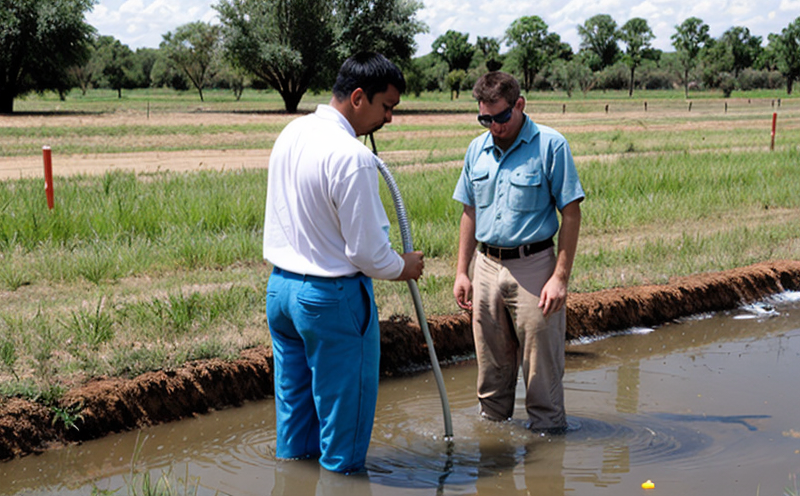EPA 8260 Volatile Organic Compounds VOC Test in Groundwater
The EPA (U.S. Environmental Protection Agency) Method 8260 is a widely recognized and comprehensive protocol for the extraction of volatile organic compounds (VOCs) from various matrices, including groundwater samples. This method has been adopted by regulatory bodies worldwide due to its robustness and reliability in detecting trace amounts of VOCs.
VOCs are organic chemical compounds characterized by their high vapor pressure and low water solubility. They can be present in the environment as a result of various industrial activities, including petroleum refining, manufacturing, and solvent use. Groundwater is particularly susceptible to contamination from these compounds due to its interaction with surface runoff and leaching processes.
The EPA 8260 method utilizes solid-phase microextraction (SPME) in combination with thermal desorption techniques for the collection and concentration of VOCs. This approach ensures that even trace amounts of contaminants can be accurately detected, making it an indispensable tool for environmental monitoring and compliance programs.
The procedure involves several critical steps:
- Sampling: Groundwater samples are collected from specified depths to ensure a representative sample.
- Preparation: The collected samples undergo rigorous preparation processes, including filtration and dilution if necessary.
- Extraction: SPME fibers are exposed to the sample matrix for an optimal period to adsorb VOCs.
- Desorption: The concentrated VOCs are desorbed onto a thermal desorber device.
- Analysis: The desorbed compounds are analyzed using gas chromatography-mass spectrometry (GC-MS) or similar instrumentation for precise identification and quantification.
| Sample Type | VOCs Detected |
|---|---|
| Groundwater | Benzene, toluene, ethylbenzene, xylenes (BTEX), chlorinated solvents, and other halogenated hydrocarbons. |
The method is designed to comply with strict quality control measures, ensuring accurate results that are traceable to international standards such as ISO 17025. Compliance officers and R&D engineers rely on this test to ensure regulatory adherence and to develop effective mitigation strategies.
Benefits
- Accurate detection of trace VOCs in groundwater, critical for environmental compliance.
- Comprehensive extraction process using SPME and thermal desorption techniques.
- Rigorous quality control measures ensuring reliable and repeatable results.
- Traceability to international standards enhancing credibility and acceptance by regulatory bodies.
- Economical use of sample volumes, reducing waste and costs associated with large-scale testing.
Industry Applications
| Industry Sector | Application |
|---|---|
| Agriculture | Monitoring pesticide contamination and evaluating the effectiveness of remediation efforts. |
| Petrochemicals | Evaluating groundwater contamination from oil spills or leaks in storage facilities. |
| Manufacturing | Identifying VOC sources and assessing the impact of industrial processes on local water supplies. |
Why Choose This Test?
The EPA 8260 method offers unparalleled accuracy and sensitivity, making it a preferred choice for environmental monitoring. Its robust extraction techniques ensure that even the smallest amounts of VOCs are captured, providing actionable data to inform remediation efforts.
Compliance officers benefit from the method's reliability in demonstrating regulatory adherence. R&D engineers can use this test to identify potential contamination sources and develop targeted solutions for environmental protection.





